Bloomberg — The Federal Reserve led a host of global central banks this week in ratcheting up monetary policy tightening efforts aimed at turning back an inflationary wave that risks steam-rolling the world economy.
The Fed’s biggest rate increase since Alan Greenspan headed the US central bank was followed by the Swiss National Bank’s surprising hike. The Bank of England also tightened, while indicating it’s open to bigger adjustments if needed.
Here are some of the charts that appeared on Bloomberg this week on the latest developments in the global economy:
World
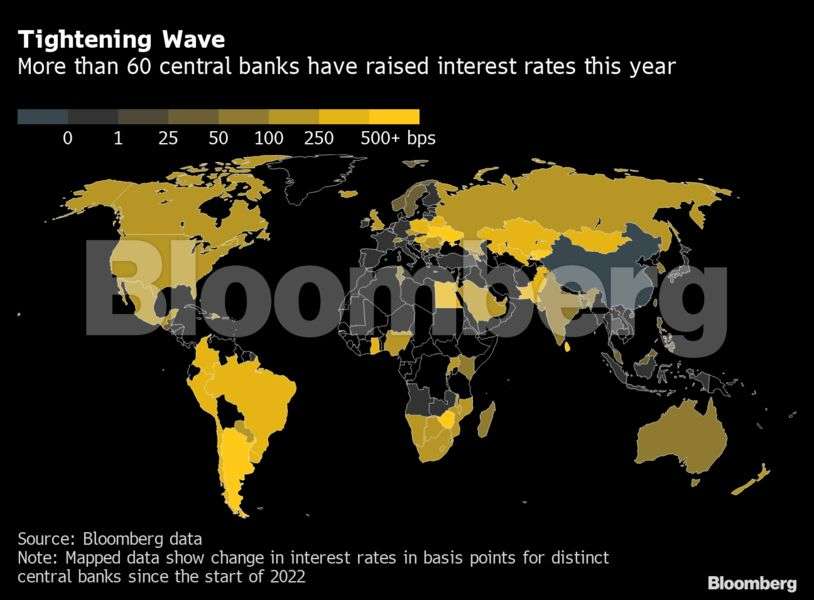
The Fed raised its benchmark interest rate by 75 basis points, prompting some monetary authorities such as those in Bahrain and the United Arab Emirates to move at the same pace. The Swiss National Bank unexpectedly increased its benchmark for the first time since 2007, joining more than 50 other central banks this year in hiking rates by a half percentage point in a single move.
US
Fed Chair Jerome Powell engineered the central bank’s biggest interest-rate increase since 1994 and held out the distinct possibility of another jumbo three-quarter percentage point increase in July. Policy makers are projecting a steep rise in interest rates in coming months. They now see the federal funds rate they control rising to 3.4% by the end of this year and 3.8% at the end of 2023.
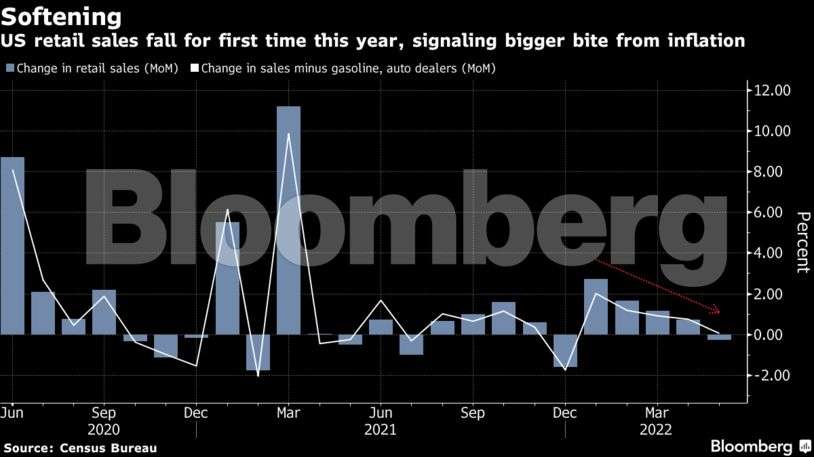
Retail sales fell in May for the first time in five months, restrained by a plunge in auto purchases and other big-ticket items, suggesting moderating demand for goods amid decades-high inflation.
Europe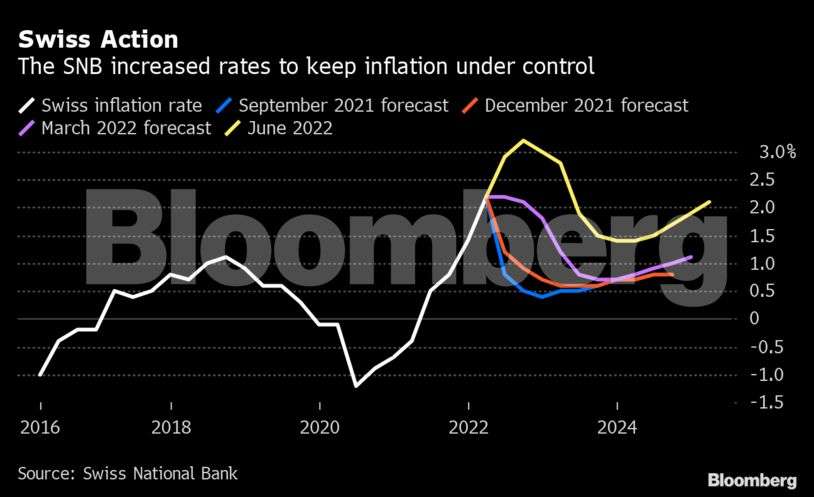 The Swiss National Bank’s surprise rate hike marked a pivot from its focus on taming a stronger currency as inflation risks getting out of hand. The SNB decision came hours after the Fed jacked up its key rate.
The Swiss National Bank’s surprise rate hike marked a pivot from its focus on taming a stronger currency as inflation risks getting out of hand. The SNB decision came hours after the Fed jacked up its key rate.
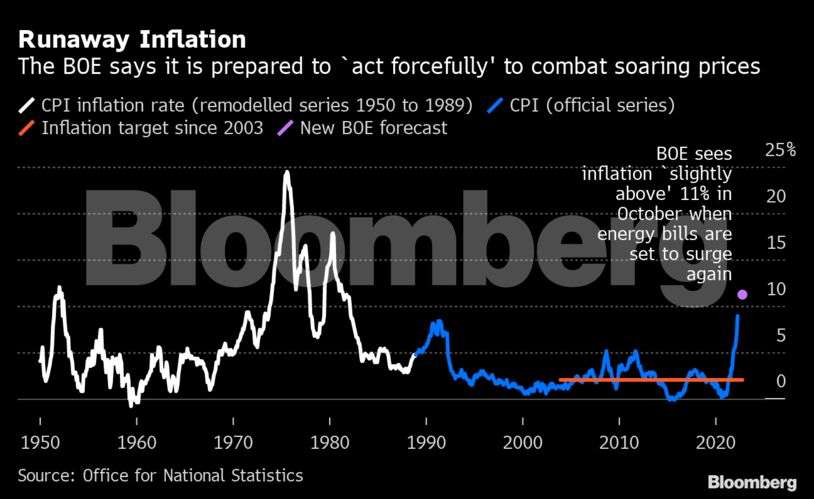
The Bank of England raised interest rates for a fifth straight meeting and sent its strongest signal yet that it’s prepared to unleash larger moves if needed to tame inflation.

The UK economy shrank in April at the sharpest pace in more than a year, highlighting risks that a broader contraction is under way. The figures underscore a dimming outlook for the economy, with manufacturing, services and construction all contracting together for the first time since January 2021.
Asia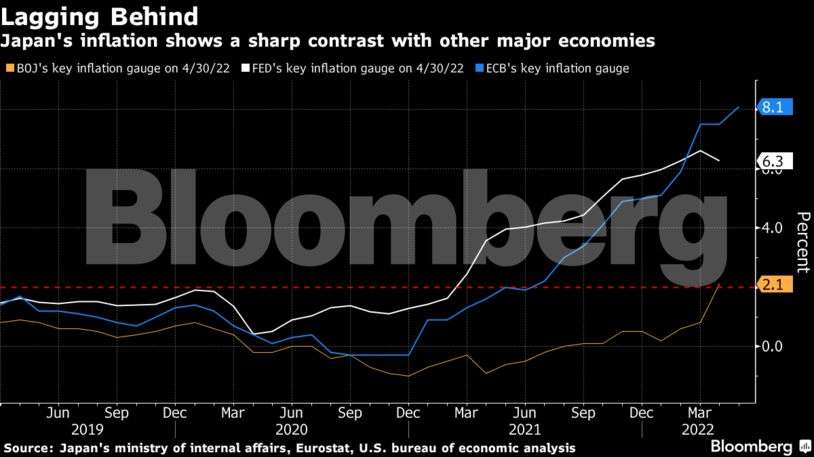
Bank of Japan Governor Haruhiko Kuroda held firm with rock-bottom interest rates, defying an intensifying global wave of central bank tightening and concentrated market pressure on the yen and government bonds.
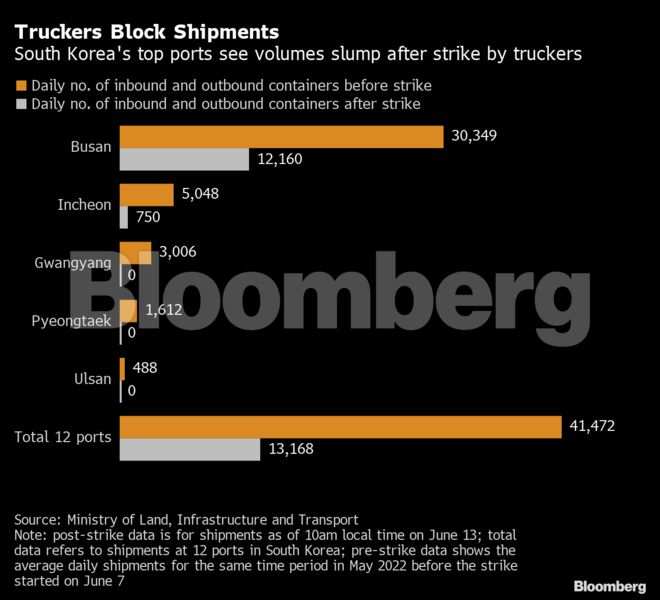
The risk to South Korea’s economy and global supply chains is growing as a nationwide trucker strike widens, curbing output at top steelmaker Posco and causing increasing damage to the petrochemicals sector.
India’s wholesale inflation accelerated for a third straight month as high commodity prices and supply chain disruptions continued to stoke input costs for manufacturers.
Emerging Markets

East African finance chiefs increased spending plans to a record to sustain economic growth as they try to cope with the fallout from Russia’s war in Ukraine. Challenges they face as a result of the war and domestic issues, including prolonged drought and political disruptions, range from heavier debt burdens to mounting inflationary pressures and weakening currencies.
—With assistance from Philip Aldrick, Andrew Atkinson, Vrishti Beniwal, Allegra Catelli, Libby Cherry, Toru Fujioka, David Goodman, Sam Kim, Heesu Lee, Rich Miller, Chikako Mogi, Ana Monteiro, Fumbuka Ng’wanakilala, Fred Ojambo and Olivia Rockeman.